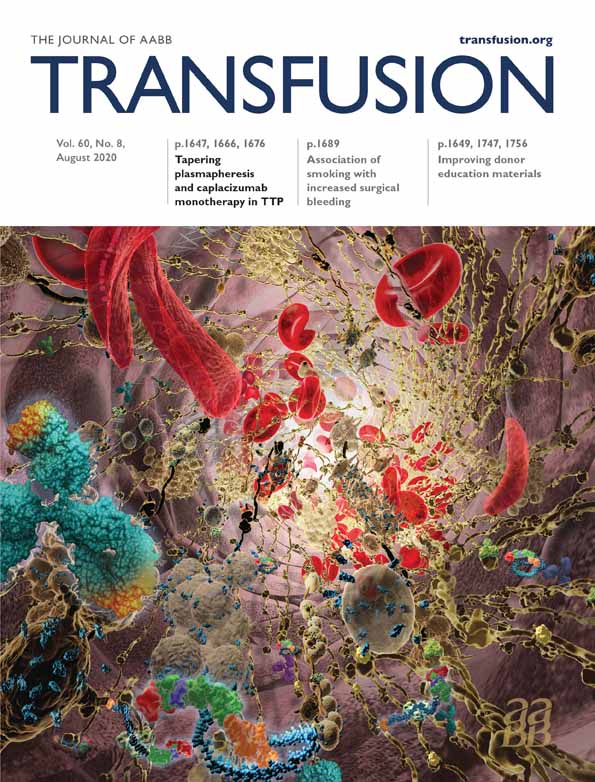Blood utilization and characteristics of patients treated with chronic transfusion therapy in a large cohort of Brazilian patients with sickle cell disease
Abstract
BACKGROUND
Red blood cell (RBC) transfusions are used in sickle cell disease (SCD) to treat acute complications or as chronic transfusion therapy (CTT) to prevent severe manifestations. The objectives of this study were to describe blood utilization and adverse events (AEs) associated with RBCs in the Brazilian SCD population and compare characteristics of patients treated or not with CTT.
STUDY DESIGN AND METHODS
A SCD cohort was established at six Brazilian centers. Medical and blood bank records were abstracted for clinical and transfusion history. Two controls not treated with CTT matched on center, SCD genotype, sex, and age were selected for each CTT case within the cohort to compare characteristics between the two groups.
RESULTS
Most of the 2794-member cohort had received a transfusion (75.0% of children and 89.2% of adults) with 29.2% of patients receiving transfusion in the prior year. There were 170 (10.6%) children and 115 (9.2%) adults treated with CTT. Children not treated with CTT were more likely to have pain and acute chest hospitalizations in the prior year (25.3% vs. 11.9%, p = 0.0003; and 22.0% vs. 10.7%, p = 0.002, respectively). Both iron overload and alloimmunization were more common in CTT cases compared to controls (65.6% vs. 17.0% and 36.2% vs. 15.9%, respectively). A higher proportion of adults treated with CTT demonstrated oxygen saturation of greater than 95% compared to controls not treated (51.1% vs. 39.2%), while there was no difference in oxygenation between children treated or not. Of 4501 transfusion episodes, 28 (0.62%) AEs were reported. There was no difference in AEs associated with transfusions for acute indications versus CTT.
CONCLUSION
Red blood cell transfusion was common in Brazilian SCD patients, with utilization driven by CTT. Transfusion reactions were not common; however, alloimmunization and iron overload were frequent among those on CTT, highlighting the need for novel clinical strategies to mitigate these risks.
CONFLICT OF INTEREST
The authors have disclosed no conflicts of interest.




